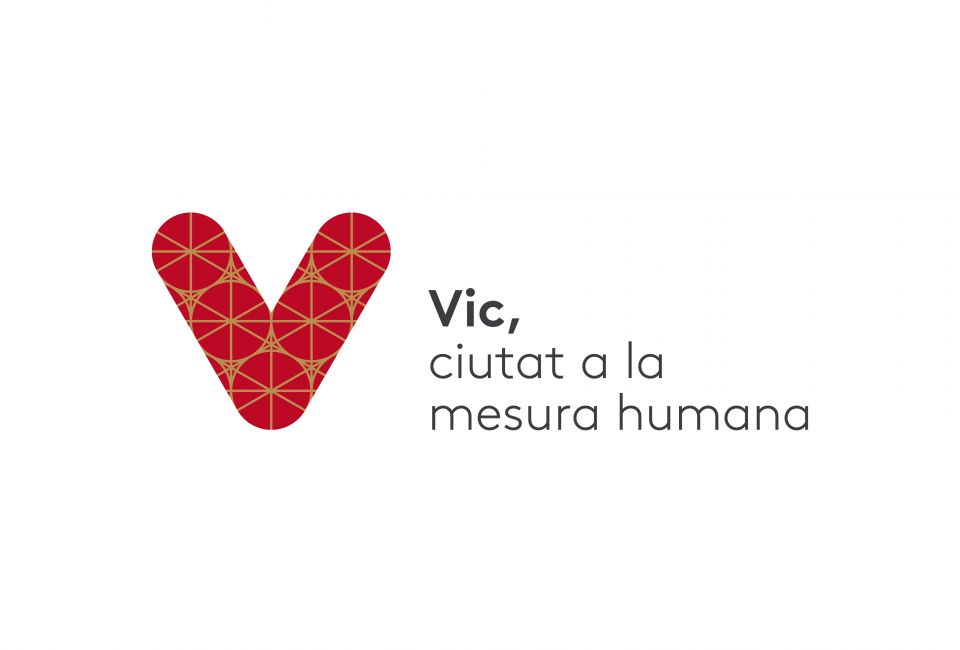
The process of designing a place brand can be a tool in urban governance for creating a unique narrative of identity
The brand 'Vic, a city with a human dimension,' which was presented in 2015 and implemented over the next four years, created an interface for structuring the entire narrative of the capital of the Osona region, placing the citizen and quality of life at the centre of political debate and society's collective imaginary. That is one of the main conclusions of the study The Role of a City Council in a Place Branding Campaign: The Case of Vic in Catalonia , a scientific article published in the journal Sustainability on 28 May, and authored by the researchers in the Faculty of Business and Communication Studies at the University of Vic - Central University of Catalonia Xavier Ginesta, Jordi de San Eugenio and José A. Corral, working with the former rector of the University, Jordi Montaña.
The study examines the process of public branding led by Vic City Council and implemented on its behalf by the Audiovisual Translation, Communication and Territory (DEAL) research group at UVic-UCC, with the cooperation of the Emprèn group. The researchers' work had two objectives: first, to consider in detail the process involved in the conceptualisation, design and implementation of the city's new place branding, which took place during the 2013-2014 academic year; and second, to present the implications of place branding on the public management of the territory.
A tool for good governance
The article states that branding is much more than a tool solely for institutional communication by the public administration and is in fact a tool for good governance "due to its complexity, its holistic vision of public policies, the need to define and execute strategic plans and for communication with the stakeholders," explain the authors of the study, according to which "a place brand must be based on in-depth knowledge of the society in question."
Bottom-up processes should therefore be applied when creating them, or in other words, those "based on working with the target groups and private-public cooperation, to build much more precise arguments that can encompass a certain collective imaginary," say the authors. Their research also concludes that place brands developed with the involvement of the various public and private stakeholders that are part of it, as well as the various institutions, organisations and ultimately the public, "become something that helps to manage the identity and urban governance of a place and they contribute to guaranteeing the success of the [place branding] campaign, for both external audiences and above all for internal ones, among whom we want to create a sense of belonging and community."
The researchers also conclude that "the processes involved in the design and conceptualisation of place brands do not always have to be reconsidered from scratch, because an analysis of previous campaigns can be a viable starting point," they say. For example, this applies to the brand 'Vic, a city with a human dimension,' which adopts some elements of the 'Vic, city of...' campaign of 2004.
Finally, the project has led the authors to the conclusion that place branding can become "a meeting point between market interests, the public administration and citizens, as a key element in the city’s policy of economic promotion and social revitalisation."
The case of 'Vic, a city with a human dimension'
According to the researchers, the success of the 'Vic, a city with a human dimension' place brand lies in the fact that Vic City Council presented an umbrella brand that brings together all its campaigns and creates a common storytelling, as well as a strategic action plan for future initiatives and for all governing bodies. They also explain that the process involved in its creation was participatory, including public and private stakeholders, and sought consensus among all political groups. "Only with the certainty that all the municipal groups understand the need to advance towards a global brand for this capital, one that will last a long time, can we prevent these brands from becoming the result of one term of office," they say.
This is precisely what had previously happened in Vic, where eight attempts to create a brand between 1973 and 2009 were identified in the initial diagnosis in the study. The fieldwork to create the new brand was divided into three main areas: first, 14 focus groups, second, an open-ended survey answered by 855 people, and third, two in-depth interviews.
This research provided the elements which were the basis for building the brand, a plural combination of many perspectives, according to which the people of Vic believe that their city is a mixture of architectural heritage, gastronomy, artistic and cultural influences, and values such as integration and inclusion, multiculturalism and a balance between tradition and modernity. The UMedia agency, affiliated to UVic and headed by Jordi Cano - to whom the article is dedicated in memoriam - designed the logo for the city's new brand that has been in place since 2015.